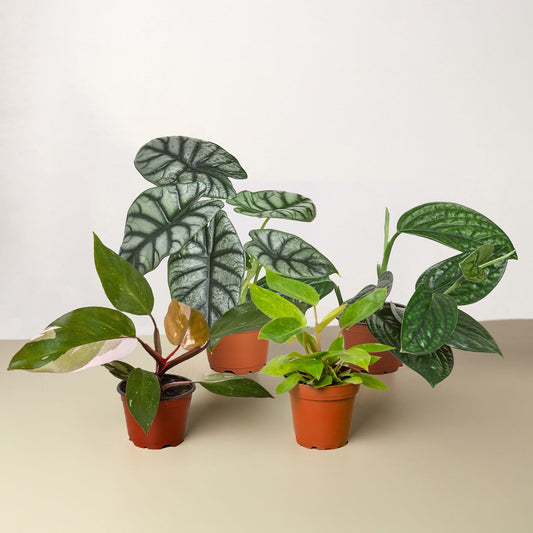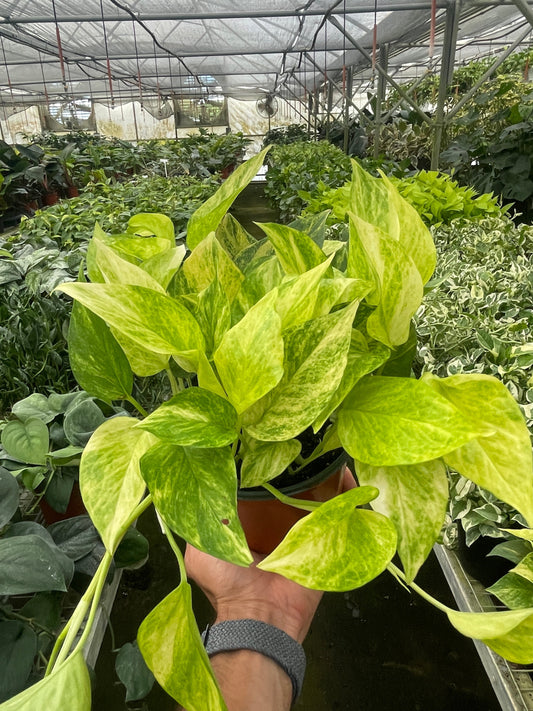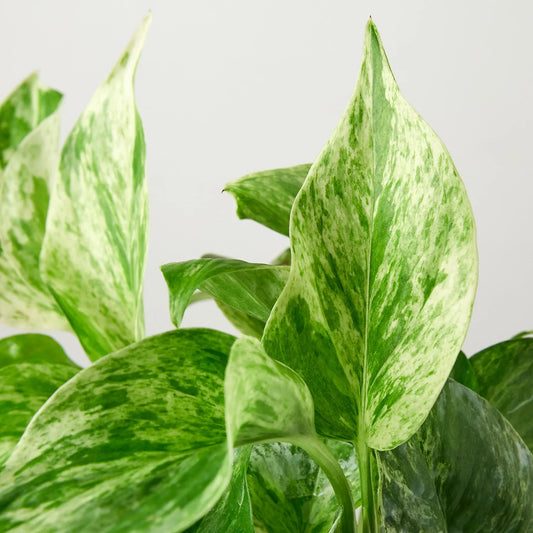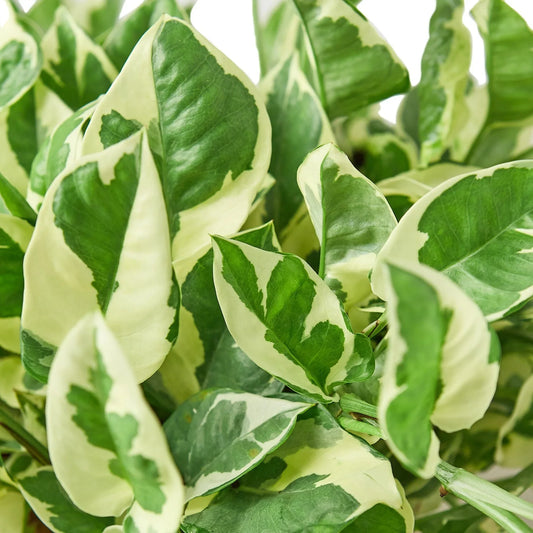How To Pick The Right Pot Size For Your Orchid
Cafe Planta Team
Choosing the right pot size for your orchid can be a bit tricky, but it's an essential part of ensuring your plant thrives. Orchids are unique and have specific needs, especially regarding their living space. Picking the wrong pot could lead to issues like root rot or stunted growth.
In this article, we'll guide you through the main factors to consider when selecting a pot for your orchid. From understanding root systems to the importance of drainage, we'll cover everything you need to know to give your orchid the best home possible. Let's get started!
Understanding Orchid Root Systems
Orchid roots are quite different from those of other houseplants. Unlike the typical soil-loving roots, orchid roots are adapted to cling to tree bark in their natural habitats, which means they need plenty of air circulation. This means that picking a pot that allows for airflow is crucial.
Most orchids are epiphytes, meaning they grow on other plants rather than in soil. Their roots are designed to absorb moisture and nutrients from the air, so they have a spongy outer layer called velamen. This layer helps them cling to surfaces while absorbing water. Understanding this unique characteristic is the first step in choosing the right pot.
When selecting a pot, consider how the design can accommodate these roots. A pot that is too tight can suffocate them, while one that is too large can retain too much moisture, leading to root rot. It's all about finding that sweet spot where the roots have room to breathe but not so much space that they drown in excess water.
Size Matters: Choosing the Right Pot Dimensions
When it comes to orchids, bigger isn't always better. Many people make the mistake of choosing a pot that's too large, thinking their orchid will grow into it. However, orchids prefer snug quarters. A pot that's just big enough to accommodate the roots is typically the best choice.
If you're repotting an orchid, it's usually best to go just one size up from the current pot. This means if your orchid is currently in a 4-inch pot, the next size up would be a 5-inch pot. This small increment allows for some growth without overwhelming the root system.
Consider the growth pattern of your specific orchid species. Some orchids, like Phalaenopsis, grow outward, while others, like Dendrobium, grow more vertically. This can affect the ideal pot size and shape. An orchid that grows outward may need a wider pot, whereas a vertically growing orchid might do better in a taller one.
The Importance of Drainage
Drainage is a critical factor when choosing a pot for your orchid. Orchids do not like to sit in water, and proper drainage ensures that excess water can escape, reducing the risk of root rot. Most orchid pots come with plenty of drainage holes, but it's something you should always double-check.
If your chosen pot doesn't have enough drainage, you can add more holes yourself, provided the material allows it. Clay and plastic pots can usually be modified with a drill, but be careful not to compromise the pot's integrity.
Consider using a pot with a raised bottom or feet, which can help with drainage by allowing water to escape more easily. Some orchid pots even come with a built-in saucer to catch excess water, making it easier to water your plant without making a mess.
Material Choices: Clay, Plastic, or Ceramic?
The material of your orchid pot can significantly impact its growth. Clay, plastic, and ceramic are the most common options, each with its pros and cons.
- Clay pots are breathable and provide excellent airflow to the roots. They also tend to dry out faster, which can be beneficial for orchids that don't like to stay wet. However, they can be heavy and breakable.
- Plastic pots are lightweight and retain moisture longer, which can be good in drier environments. They're also more versatile in terms of color and style. However, they might not provide as much airflow as clay pots.
- Ceramic pots can be both functional and decorative. They often have fewer drainage holes, so ensure adequate drainage is a priority. They also tend to be heavier, which can help stabilize larger plants.
Ultimately, the choice of material should align with both your orchid's needs and your home's environment. For example, if your home is humid, a clay pot might help prevent overwatering. In contrast, a plastic pot could be better for a drier climate.
Consider Transparent Pots for Better Monitoring
Transparent pots are a popular choice among orchid growers for several reasons. Being able to see the roots allows you to monitor their health directly. Healthy orchid roots should be green and firm, indicating they're getting enough moisture.
These pots also help you track when it's time to water. You can see if the roots are dry by their color—gray or white roots usually mean it's time for a drink. This can be particularly helpful for beginners who are still getting the hang of orchid care.
While transparent pots are often made of plastic, they come with the same pros and cons as colored plastic pots. However, their ability to let light in can also encourage root photosynthesis, which is a bonus for your orchid's health.
Aesthetic Considerations for Your Space
Of course, while functionality is paramount, you also want your orchid pot to look good in your home. Orchids are beautiful plants, often used as decorative pieces, so the pot should complement your interior design.
Consider the color schemes and styles in your home. A sleek, modern pot might suit a contemporary space, while a rustic clay pot could fit a more traditional or bohemian decor. There are even pots with decorative patterns or textures that can add a bit of flair to your plant display.
Don't forget about the pot's size relative to the space as well. A small orchid in a huge pot might look out of place, whereas a larger pot with a full-grown orchid can become a stunning focal point in a room. It's all about balance and ensuring that the pot enhances rather than overwhelms your space.
Repotting: When and How to Transition
Knowing when and how to repot your orchid is vital for its health. Orchids typically need repotting every 1-2 years, depending on their growth rate and the potting medium's condition. Signs that your orchid needs a new pot include roots growing out of the pot, deteriorating potting medium, or stunted growth.
When repotting, gently remove the orchid from its current pot and shake off the old medium. Trim any dead or rotting roots with sterilized scissors. Choose a new pot that's slightly larger than the previous one, and fill it with fresh orchid medium, like bark or sphagnum moss.
After repotting, water your orchid lightly to help it settle into its new home. Avoid fertilizing immediately, as the plant needs time to adjust. Place it in a location with appropriate light and humidity to encourage healthy growth.
Common Mistakes to Avoid
Even experienced plant lovers can make mistakes when potting orchids. Here are a few common pitfalls to watch out for:
- Overpotting: As mentioned earlier, choosing a pot that's too large can lead to water retention issues and root rot.
- Lack of drainage: Always ensure your pot has adequate drainage holes to prevent waterlogging.
- Ignoring the potting medium: Orchids need specific potting mediums like bark or moss. Regular soil can suffocate the roots.
- Repotting too often or too infrequently: Both can stress your orchid. Stick to a regular schedule based on your plant's needs.
Avoiding these mistakes will help your orchid thrive and keep its blooms vibrant and healthy.
Final Thoughts
Choosing the right pot for your orchid is all about balance—between size, material, and aesthetics. By understanding your orchid's unique needs, you can create an environment where it can flourish.
At Cafe Planta, we're passionate about helping you care for your plants. Whether you're a seasoned plant parent or just starting, we offer a wide range of houseplants and accessories to suit your needs. If you have any questions, feel free to email us or reach out on Instagram. We're here to support your plant journey and help you create a thriving home jungle.



















